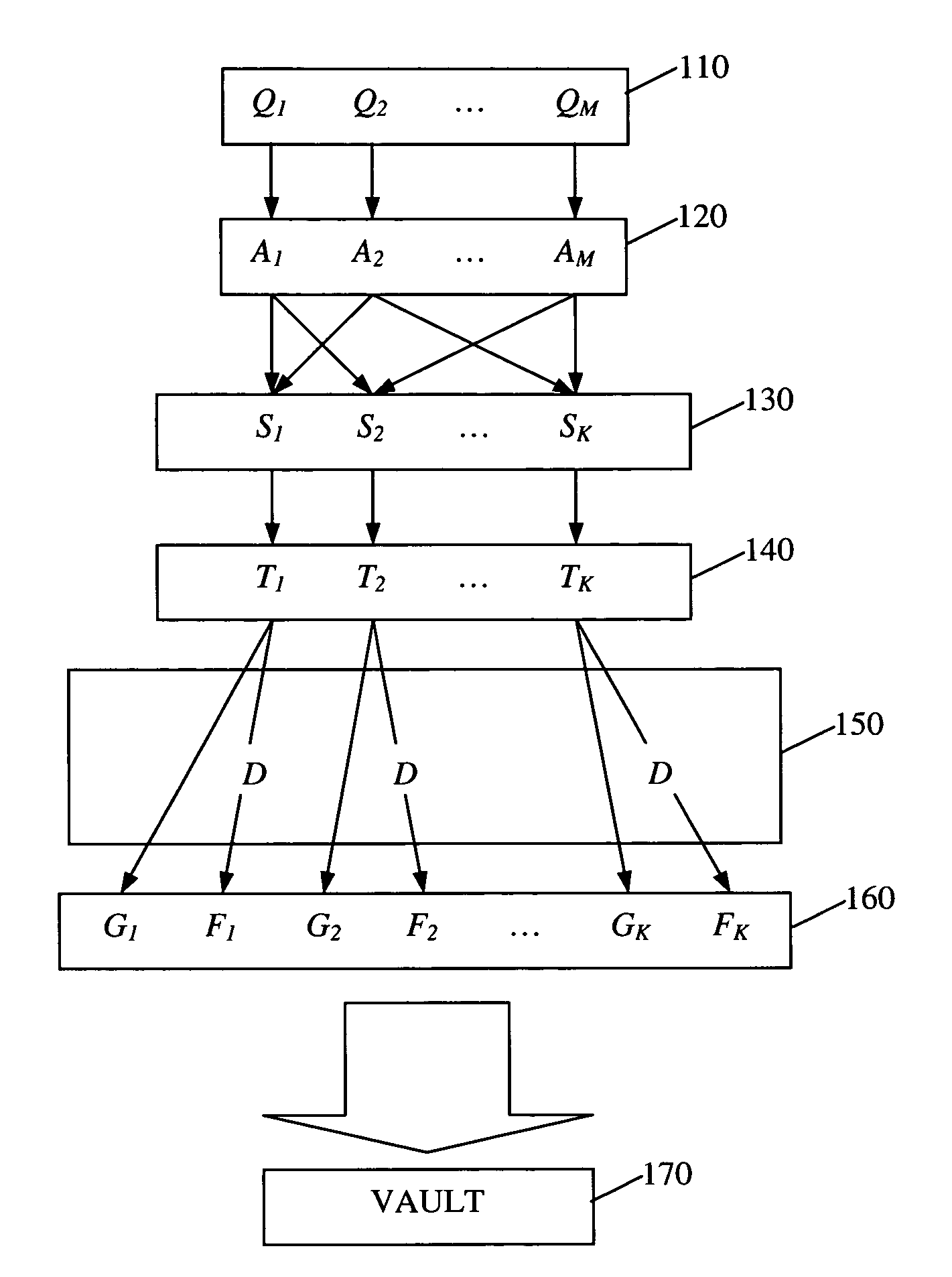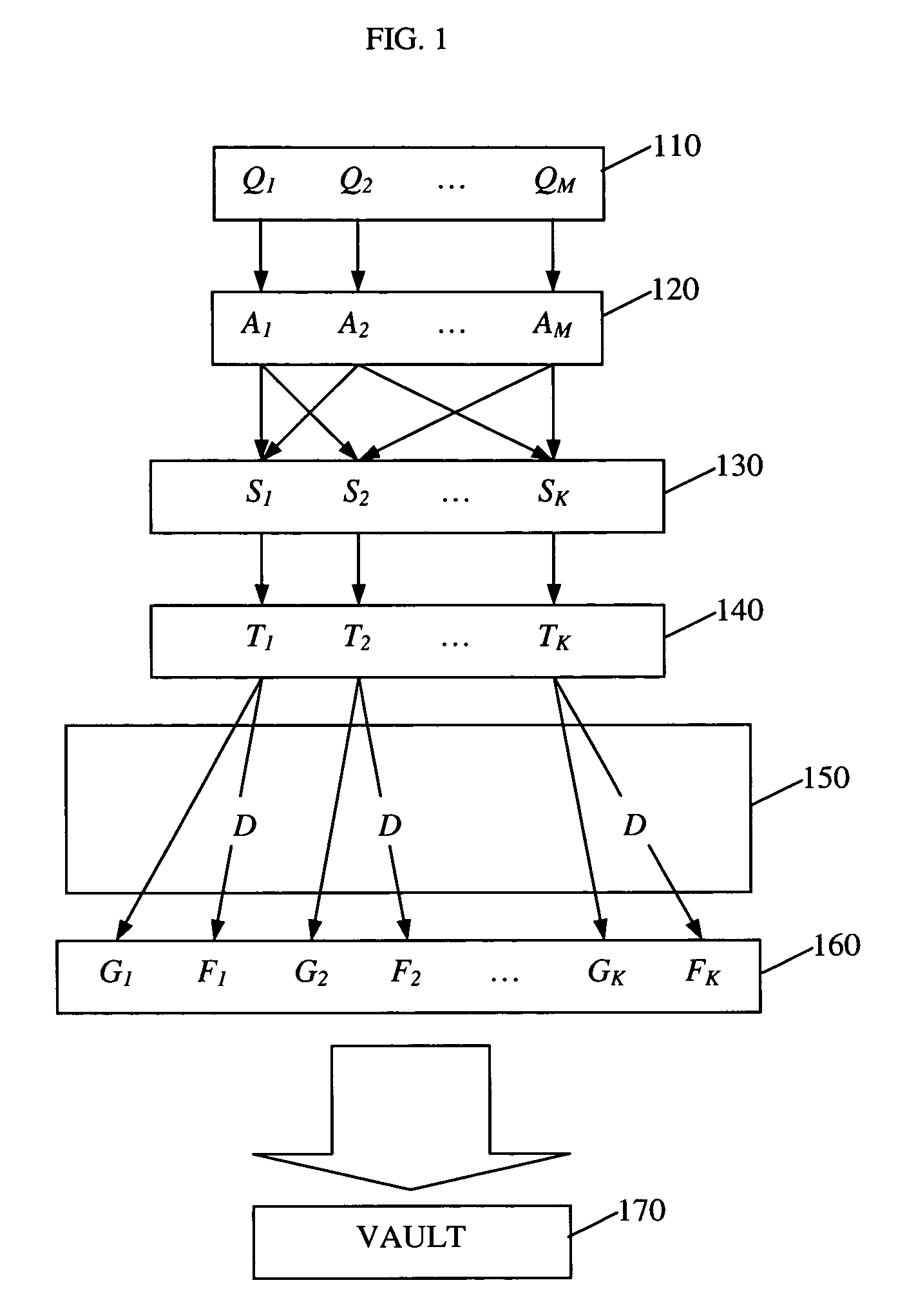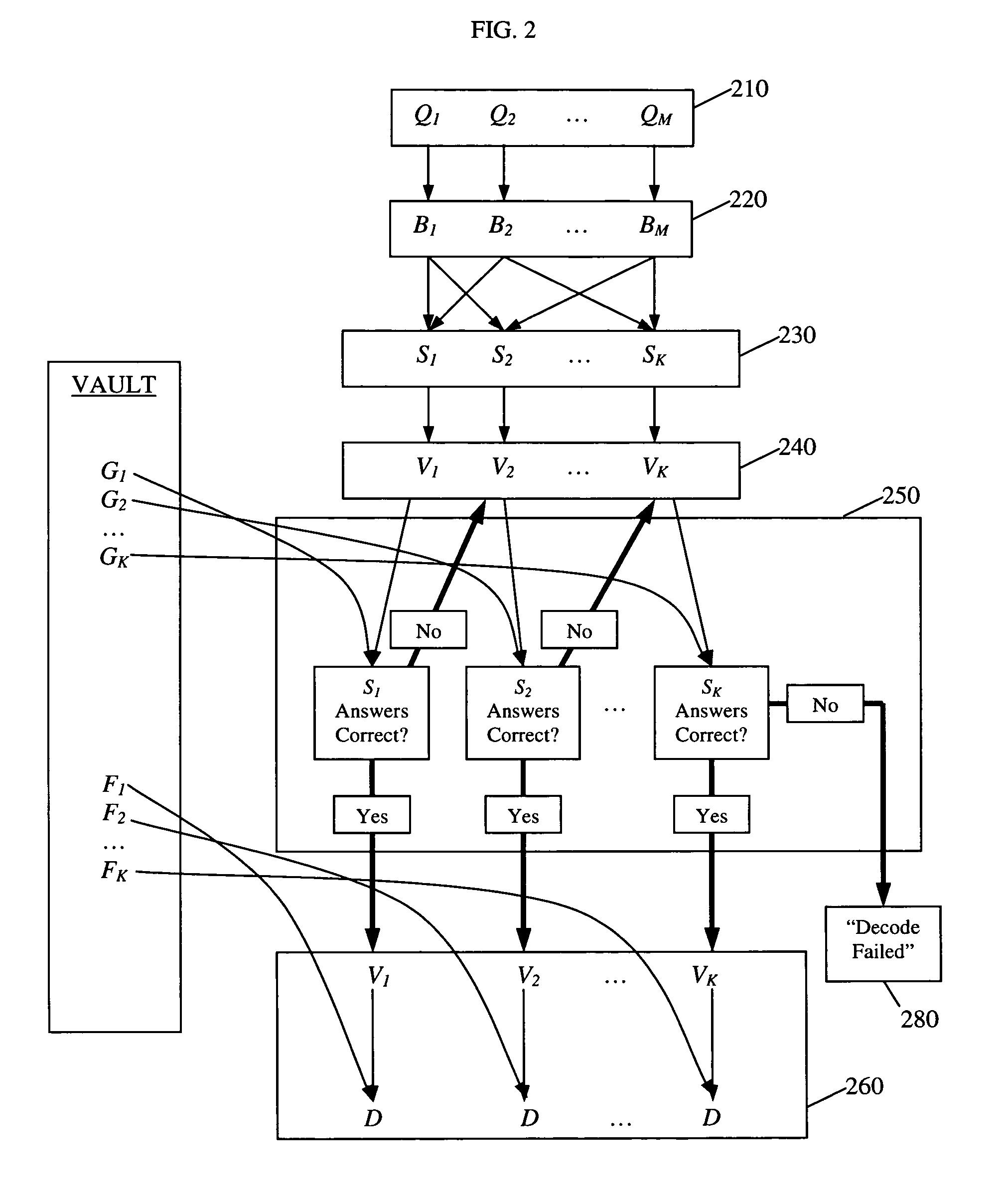Storing digital secrets in a vault
a vault and digital secret technology, applied in the field of digital data encryption, can solve the problems of increasing the chance, preventing legitimate users from authenticating, and unable to guess the correct answer to even a substantial portion of the question, so as to strengthen the security of their implementation, facilitate deployment, and reduce the risk of attack
- Summary
- Abstract
- Description
- Claims
- Application Information
AI Technical Summary
Benefits of technology
Problems solved by technology
Method used
Image
Examples
Embodiment Construction
[0025]Overview
[0026]The embodiment described herein is a software-based encryption / decryption algorithm that is implemented on a computer system. The algorithm asks a user a set of m questions and then encrypts a user digital secret with k different combinations, or subsets, of the answers the user provides. Then the algorithm stores the encrypted data in a vault. Later the algorithm decrypts the encrypted secret when it asks the user (or an entity with sufficient knowledge of the user) the same set of questions, and the user provides a sufficient number n of correct answers. Prior to implementing the algorithm on the system, a system administrator defines which subsets of questions, if answered correctly, are sufficient to authenticate the user and allow the algorithm to decrypt the encrypted secret. By allowing various subsets of answers, the algorithm allows for some error on the part of the user.
[0027]The algorithm asks questions to which the user is likely to exclusively know t...
PUM
 Login to View More
Login to View More Abstract
Description
Claims
Application Information
 Login to View More
Login to View More - R&D
- Intellectual Property
- Life Sciences
- Materials
- Tech Scout
- Unparalleled Data Quality
- Higher Quality Content
- 60% Fewer Hallucinations
Browse by: Latest US Patents, China's latest patents, Technical Efficacy Thesaurus, Application Domain, Technology Topic, Popular Technical Reports.
© 2025 PatSnap. All rights reserved.Legal|Privacy policy|Modern Slavery Act Transparency Statement|Sitemap|About US| Contact US: help@patsnap.com



